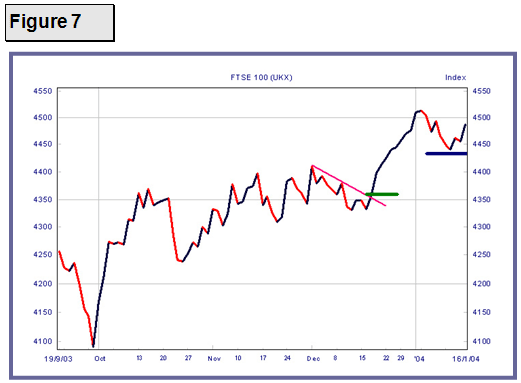Anyone trading 24-hour markets or those that are open when you are not able to watch them might want to fully automate the whole process. To do this you would need to leave a stop or a limit to open the position.
This would then kick in if the market hits your target entry level. By using a contingent ‘if done’ order it is possible to link in a ‘one cancels the other’, which allows two orders to be left in the market such that if one gets triggered the other becomes inactive. By setting these as a limit and a stop either side of the entry price it is possible to fully automate both the profit taking and the downside protection.
Stop orders can also be used to lock in profits as well so that if the trade goes against you, you will be stopped out for a profit. This is shown in Figure 7.

In Figure 7 above you went long on the FTSE 100 Index as it broke the mini trend shown by the pink line. This was at 4360. The price has increased then made a low just below 4450 before continuing up to make you more profit. You decide that if the price reverses and goes below the recent low, you wish to close the trade so you set a stop order, represented by the blue line, just below the low. This is an example of using a stop order to lock in profit. Notice that it is a stop because the price if it closes will be worse for you than the current price.
So as you can see it is fairly easy to trail your stop order; always upwards, never down on a long trade – to lock in a greater proportion of your accrued profit. In conclusion, whether or not you use tight initial stop orders on spread bets, you will almost definitely want to lock-in any accrued profits using stop orders.